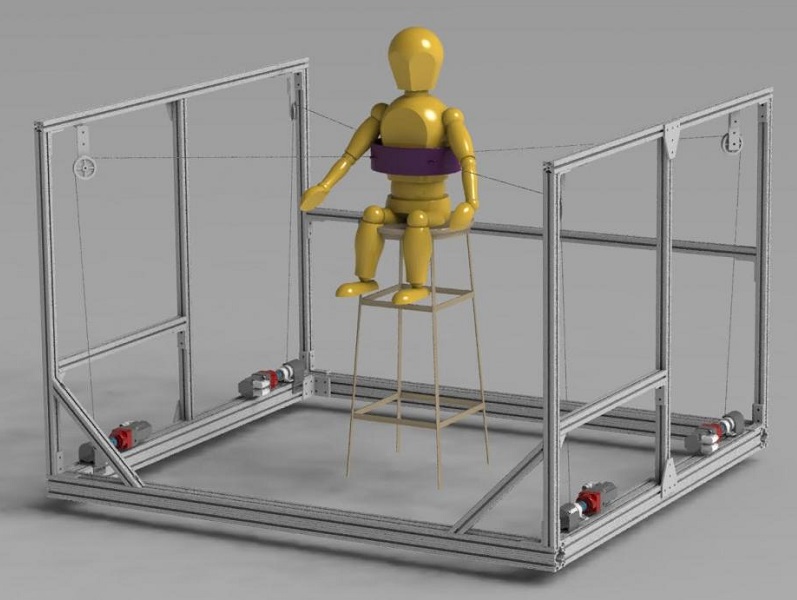Researchers at Columbia University have developed a robotic device that can help people with spinal cord injuries to improve their trunk control, allowing them to sit more stably and expand their range of motion when sitting. The device consists of a motorized belt that attaches to the torso, and which applies forces as users complete upper body movements. The device is intended to reduce falls and improve movement capabilities in patients with spinal cord injuries, who are typically wheelchair users.
Patients with spinal cord injuries can struggle with carrying out activities while sitting in their wheelchairs. One of the issues is falls while performing everyday tasks such as bending or reaching. Improving trunk control in such patients could help them to increase their stability and reduce their risk of falling.
These Columbia researchers have called their device the Trunk-Support Trainer (TruST), and it aims to train a user to expand their active workspace while sitting. “We designed TruST for people with spinal cord injuries who are typically wheelchair users,” said Sunil Agrawal, one of the researchers involved in the study. “We found that TruST not only prevents patients from falling, but also maximizes trunk movements beyond patients’ postural control, or balance limits.”
The system consists of a belt that lies around the torso of a user. The belt is attached to motorized cables that can apply various forces to it as the user performs movements. The device allows the user to perform upper body movements that they would otherwise not be able to perform without using their hands for additional stability.
So far, the research team has tested their device in a pilot study with five spinal cord injury patients. The patients performed upper body movements where they moved their trunk as far as possible in eight different directions without the assistance of their hands. When the patients used the system, they significantly expanded how far they could reach, increasing the sitting workspace around their bodies by approximately 25%.
“The capacity of TruST to deliver continuous force-feedback personalized for the user’s postural limits opens new frontiers to implement motor learning-based paradigms to retrain functional sitting in people with spinal cord injuries,” said Victor Santamaria, a researcher involved in the study. “The robotic platform will be used to train participants with spinal cord injuries by challenging them to move their trunk over a larger workspace, with TruST providing assist-as-needed force fields to safely bring the subjects back to their neutral sitting posture,” added Agrawal.














